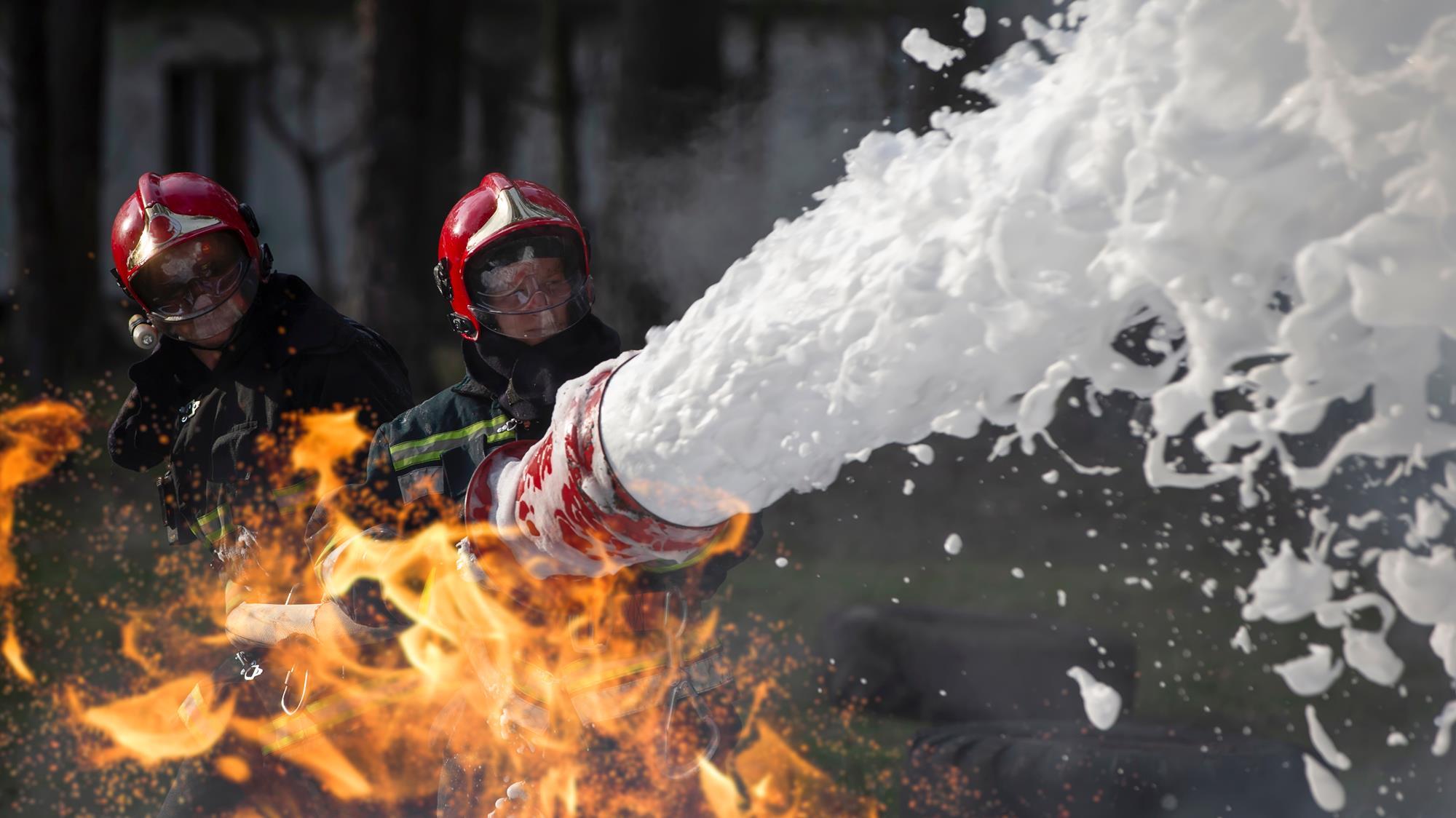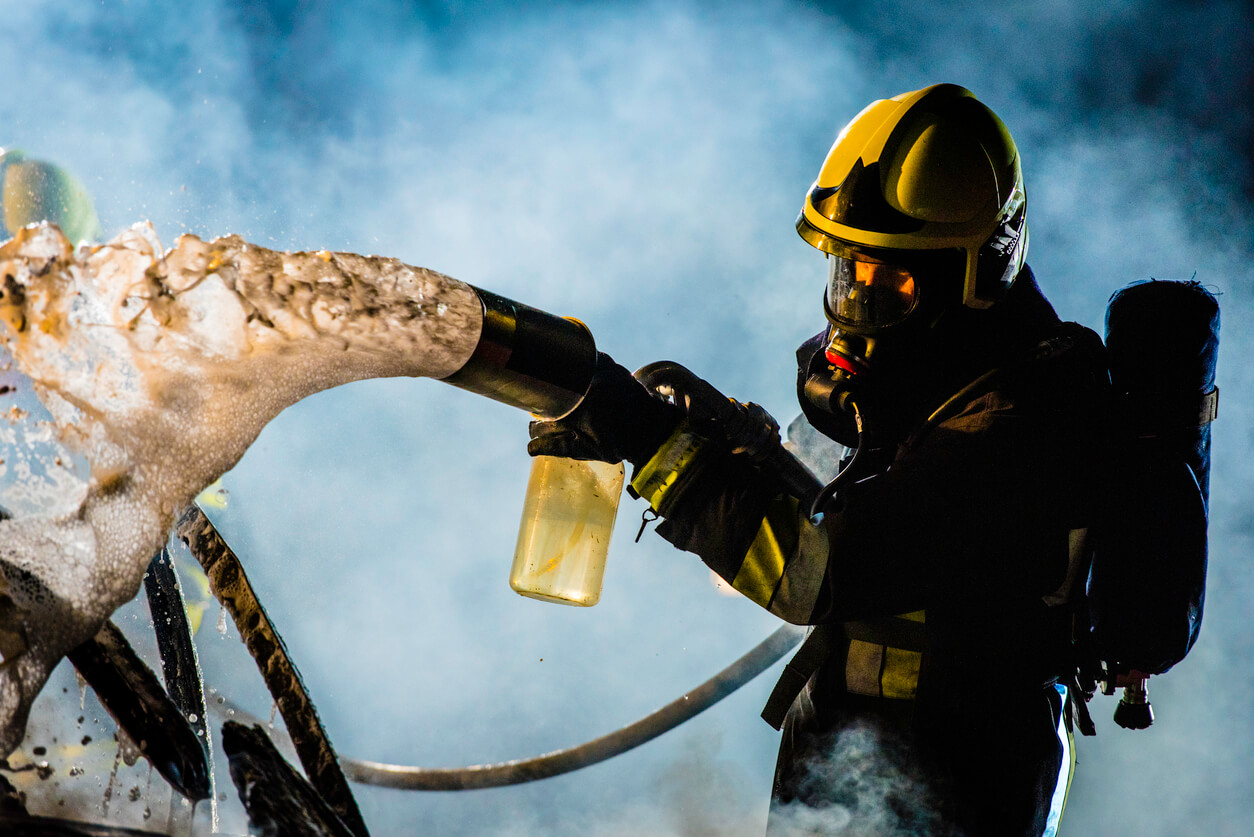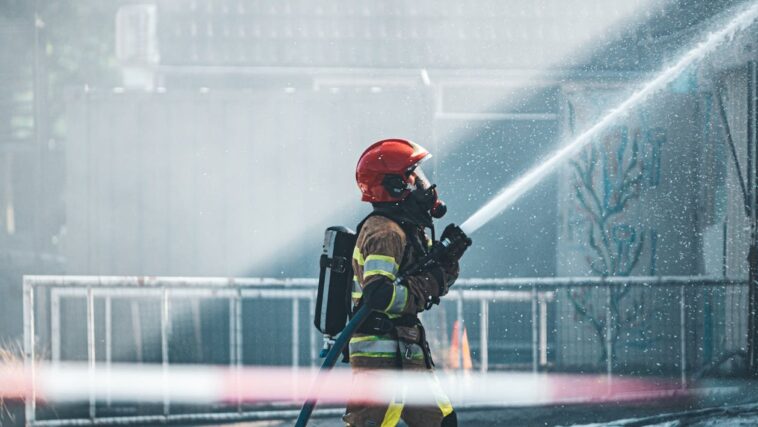AFFF (Aqueous Film-Forming Foam) has long been a firefighter’s hero, blanketing flames and saving lives. However, the story takes a turn beyond fire suppression. This environmental villain hides a dark secret. The key components of the foam, PFAS chemicals (per- and polyfluoroalkyl substances), pose a significant threat to our environment and health.
This article discusses the environmental threats of AFFF. We’ll explore how these persistent chemicals contaminate water sources, harm wildlife, and potentially endanger human health.
Persistence and Pervasiveness of PFAS Chemicals

Unlike most fire retardants, PFAS chemicals, the backbone of AFFF, are the environmental equivalent of a bad house guest who never leaves. Their extremely stable chemical bonds resist natural breakdown processes, allowing them to linger in the environment for decades or even centuries.
TorHoerman Law notes that this persistence translates to widespread contamination. A spilled drop of AFFF near a training ground or a firefighting operation can infiltrate the soil and migrate down to contaminate groundwater sources.
The troubling part doesn’t stop there. PFAS chemicals exhibit a disturbing tendency called bioaccumulation. As contaminated water flows through ecosystems, these chemicals are absorbed by plants and animals.
When predators consume these contaminated prey, the PFAS content gets concentrated further up the food chain. This magnification effect can lead to potentially harmful levels accumulating in top predators, including humans.
The gravity of the contamination has spurred legal action, with numerous lawsuits filed against manufacturers of AFFF products. The AFFF lawsuit alleges negligence, failure to warn, and environmental harm caused by PFAS contamination from the foam used.
Such litigation underscores the widespread concern and legal ramifications surrounding PFAS chemicals in firefighting foam and their environmental impact.
Contamination of Water Sources
Firefighting foams are extensively utilized in areas near airports, military bases, and industrial facilities. These locations often border or are in proximity to water bodies.
They are chosen strategically due to the high fire risk associated with aviation, military operations, and industrial activities. However, the application of AFFF in these areas poses a significant risk of contamination to nearby water sources.
Recent data from the Environmental Protection Agency (EPA) underscores the alarming extent of PFAS contamination in drinking water across the United States. The EPA’s Fifth Unregulated Contaminant Monitoring Rule (UCMR5) revealed that over 44 million people have been exposed to PFAS compounds in their drinking water.
The true scale of the contamination is likely even greater than indicated by the findings. Many water systems have yet to undergo testing, suggesting that the full extent of the pollution remains underestimated.
Impact on Wildlife and Human Health

The introduction of PFAS into the environment through AFFF usage poses significant risks to both wildlife and human health. Wildlife, particularly aquatic species, are highly susceptible to contamination, which can lead to a myriad of health issues.
PFAS exposure can result in immune system suppression, developmental abnormalities, and increased susceptibility to certain cancers among wildlife populations.
Human exposure to the pollution can occur through consuming contaminated drinking water or consuming fish tainted with PFAS compounds. Similar to wildlife, humans face health risks such as immune system dysfunction, developmental disorders, and heightened cancer risks due to PFAS exposure.
According to the National Wildlife Federation, one poignant example of the impact of PFAS contamination is observed in Oscoda, Michigan. The community has been severely affected by the contamination stemming from the use of AFFF at a nearby air force base.
Clark’s Marsh Wildlife Area has been found to harbor high levels of PFAS in the livers and muscle tissues of deer and fish. As a result, advisories have been issued against consuming deer, fish, and other aquatic wildlife caught within three miles of Clark’s Marsh.
Long-Range Environmental Transport
Unlike some pollutants, PFAS compounds are not geographically confined to their point of origin. Instead, they can disperse over vast distances through air and water currents, spreading contamination to areas far removed from the source.
Their airborne particles can be carried by wind currents, dispersing pollutants over hundreds or even thousands of miles from their point of release. Similarly, PFAS compounds can travel through water bodies, contaminating rivers, lakes, and oceans and affecting ecosystems downstream and along coastlines.
The widespread use of AFFF exacerbates the potential for global environmental contamination. With the foam deployed in various locations worldwide, PFAS chemicals have the potential to contaminate water bodies and ecosystems on a global scale.
This presents a significant challenge for environmental protection efforts, as addressing the contamination requires coordinated action on an international level.
Regulations and Search for Alternatives

Efforts to regulate the use and disposal of the foam have gained momentum in response to its significant environmental threats.
JD Supra highlights that the National Defense Authorization Act (NDAA), passed in December 2019, represents a crucial step in this direction. The Act mandates the cessation of PFAS-based firefighting foam procurement and usage by the Department of Defense (DOD) by October 2024.
Additionally, with interim restrictions on training exercises involving AFFF releases, the NDAA marks a significant milestone in curbing pollution.
It’s essential to note that these regulations primarily apply to military facilities on federal property and not civilian establishments. Nonetheless, the NDAA sets a precedent for broader regulatory action and underscores the urgency of finding alternatives to the foam.
In response to increasing restrictions and environmental concerns, there’s a growing search for safer firefighting foam alternatives. However, developing effective alternatives poses significant challenges. Balancing firefighting efficacy with environmental friendliness requires overcoming technical hurdles and ensuring regulatory compliance.
Despite these challenges, progress is underway. Researchers and manufacturers are exploring various formulations and technologies to create firefighting foams that are both effective and environmentally sustainable.
Frequently Asked Questions
What is a safe alternative to AFFF?
GreenFire Firefighting Foam (GFFF) is a non-toxic, PFAS-free alternative to firefighting foam. It offers effective fire suppression capabilities without the environmental risks associated with PFAS chemicals. GFFF provides a safer option for firefighting operations, prioritizing environmental sustainability and human health.
Is AFFF foam still used today?
Despite growing awareness of its dangers, the foam is still in use today. The military and some civilian firefighters continue to use AFFF, especially in scenarios where rapid response to fuel fires is critical. However, efforts are underway to find safer alternatives.
What are the cancerous compounds in AFFF foam?
AFFF foam contains per- and polyfluoroalkyl substances (PFAS), which are linked to cancer. Specifically, compounds like perfluorooctane sulfonate (PFOS) and perfluorooctanoic acid (PFOA) are known carcinogens. Exposure to these chemicals poses significant health risks, including cancer development.
In conclusion, AFFF foam, while effective in firefighting, casts a long shadow of environmental threats. The persistent and pervasive nature of PFAS chemicals contaminates water sources, harms wildlife, and potentially endangers human health.
Stricter regulations and a continued search for safer alternatives are crucial to move beyond the reliance on foam and safeguarding our environment. The fight against AFFF contamination is far from over. However, by taking decisive action, we can work towards a future where fire safety doesn’t come at the cost of environmental peril.



